How We Celebrate Fall on the Farm
Fall on the farm has arrived! Come along as we tour the changes this season brings to our small hobby farm.
This post is part four – the last piece – of our “On the Farm” series where we’ve taken a peek around our farm during each different season to compare and contrast the changes that occur!
If you’ve missed the other posts in the series, you can find them here:
Winter on the Farm | Highlights include SNOW in the Pacific Northwest. We don’t get notable snowfall every year, so when we do we soak up how different everything looks covered in a soft white coat!
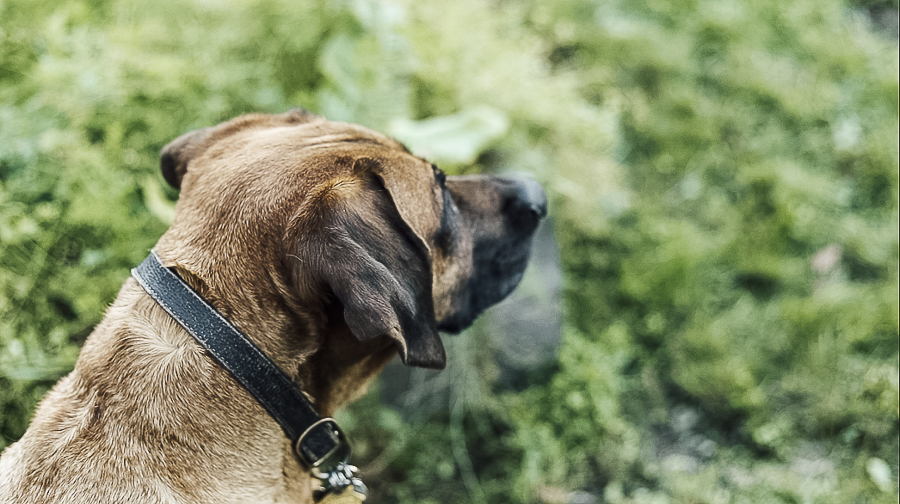
Spring on the Farm | Highlights include lots of garden preparations and adorable bunnies.
Summer on the Farm | Includes garden and orchard updates, berries, and of course, another cameo from the bunnies!
And now, Fall on the Farm:
I think a big part of our job each Fall is cleaning up from the previous summer, and preparing for the upcoming winter!
Here’s what each area of the yard is looking like now:
The Yard:
What was previously our “golden fields” (aka dried grass) are now back to being deep green and lush. It’s one of my favorite parts of Fall to see the color back in our fields.
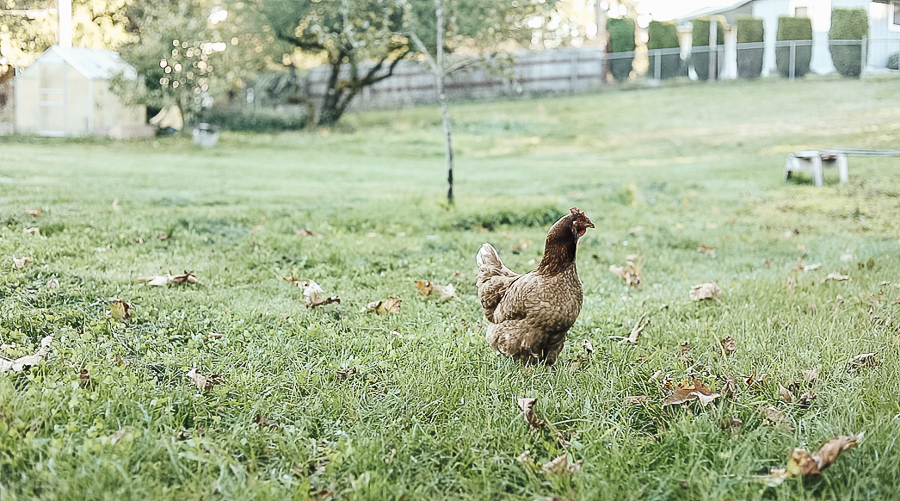
The Bees:
We’ve been hard at work over the summer to move our bees from where they had been previously to another area even further away from our neighbor’s property line (he had some issues with their previous location, though they were well within the limit as listed by law).
The thing about moving a bee hive, though is that you’re only supposed to move it 18″ every 3 days!
So earlier in the summer, we loaded our hive up onto a wheeled cart, and we’ve diligently moved it 1.5 feet every 3 days since. We’re only a few more movements away from their final home. Finally.
I’ll be painting the exterior of the hives once they’re in place for the rest of the winter.
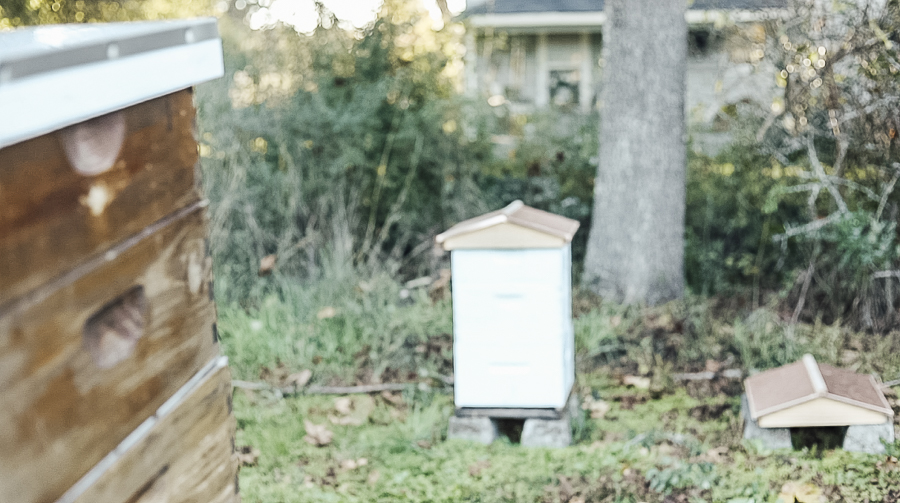
The Pony:
Our pony is appreciating the green grassy fields, and is getting nice and fluffy in preparation for the winter.
Garden:
The garden is one of the main areas that we’ll be spending time in during fall on the farm. There is lots of harvesting, weeding, and mulching to do in preparation for the changing weather.
Root Veggies:
We have quite a few carrots still in the ground, so we’ll leave those there and pick them as needed through the winter.
I do the same with my other root veggies like potatoes and beets.
Some of the carrots have flowered (also called “bolting” or “going to seed”), so we’ll be letting those finish their cycle and then we’ll harvest seeds from them for next season.
The carrots that have bolted won’t be good for eating anymore, but there are plenty that haven’t flowered that we can still enjoy.
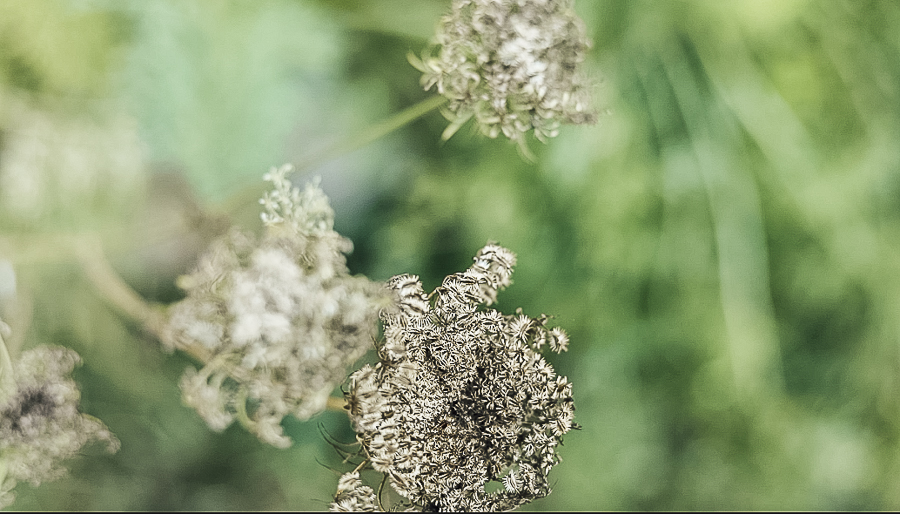
I’m excited for the beets that are left because they’re delicious with goat cheese & ravioli. Yum. Winter dinners, here we come.
Aromatics:
We’ve got quite a few leeks, onions, and chives still growing that we’ll harvest and save.
Herbs to Dry:
We’ll be harvesting and drying most of the herbs that are still in the garden.
- Parsley
- Oregano
- Lavender
- Mint
- Rosemary
Leafy Vegetables:
In our “shade bed” under the cover of our giant cedar tree, we have a 2nd wind of chard, kale, and spinach that have been left over from our Spring plantings.
Asparagus:
We have beds on both sides of our little greenhouse with asparagus planted in them, and I’m excited to see how they turn out come spring!
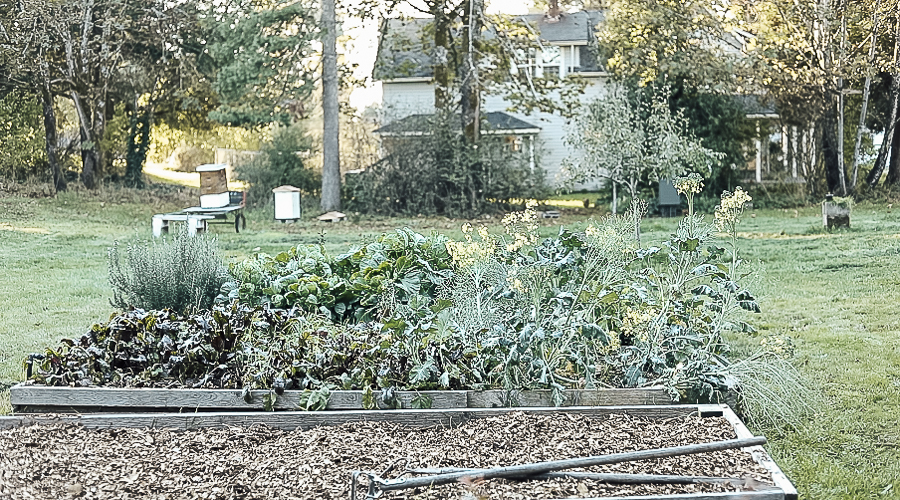
The Orchard:
Our orchard did well this year and is all finished producing. We got quite a few apples that were either given to the pony or turned into applesauce.
Outdoor Garden & Yard Projects | Fall on the Farm:
Our upcycled garden sink was one of our favorite outdoor projects this summer!
It’s proven useful as we’ve been harvesting all summer long!
And because it’s just hose-fed, there isn’t much to do to prepare it for winter other than turning off the source of the water and making sure none is sitting in the pipes.
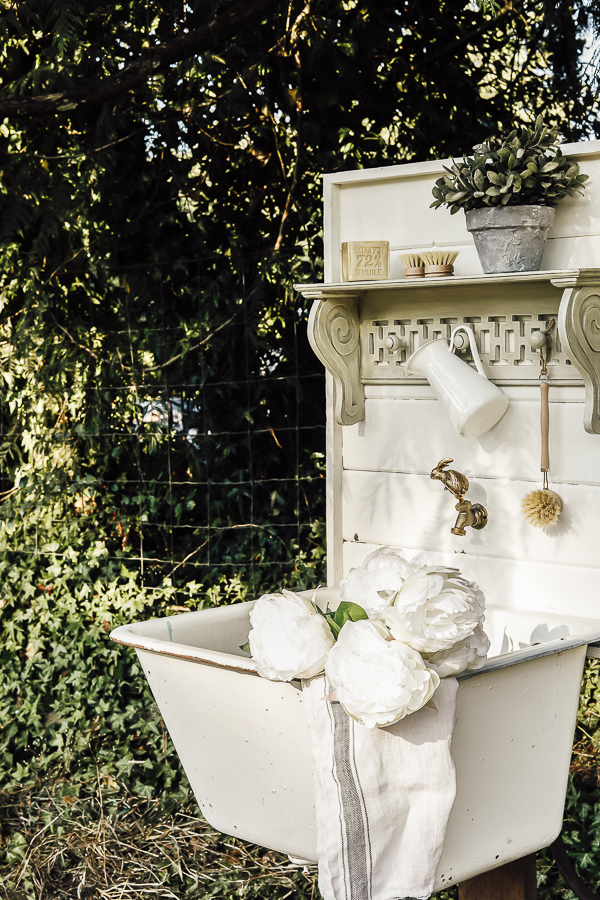
And a year-over-year favorite of ours is these DIY French Tuteurs we made, now 3 years ago! Often times during the off-season when I do not need them for growing vegetables I’ll move them around the yard to use as part of my seasonal decor. Talk about versatility!
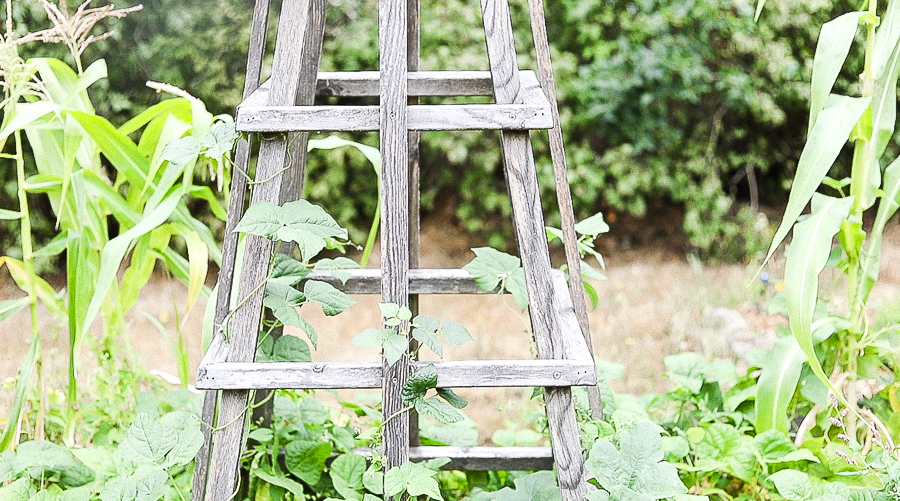
We also spent time this summer giving our firepit a quick refresh, and we’ve enjoyed bonfires ever since! I’m hopeful we’ll have time for a few more before we clean the area up, moving the furniture and lights inside for the remainder of the winter.
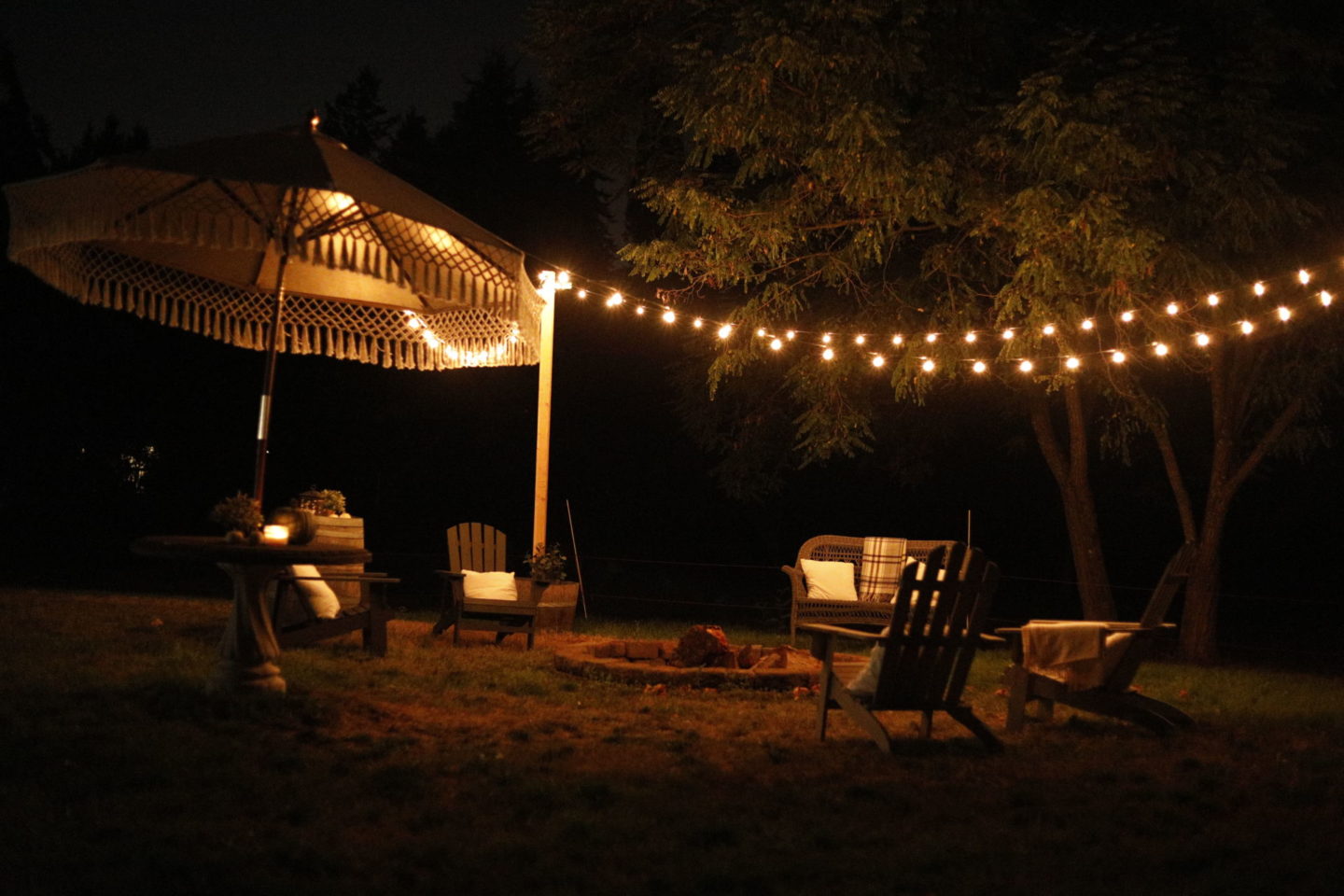
Seed Saving:
I mentioned seed saving in an earlier post and got quite a bit of feedback that this would be a fun topic to cover during my Fall on the Farm post!
I think a lot of people are intimidated by the idea, but it’s really quite simple!
The basic idea is to let the plant go through its entire life cycle process. So instead of picking the vegetable when you would normally harvest it, you let it remain on the plant or vine until it’s completely done growing.
For different plants that look different.
Peas and Beans are some of the easiest plants to harvest seeds from – and great for beginners! You simply leave the pea or bean pod attached to the vine until it starts to brown and dry out.
Then you can pick it and pop it open, and viola – you have your seeds ready for the next season.
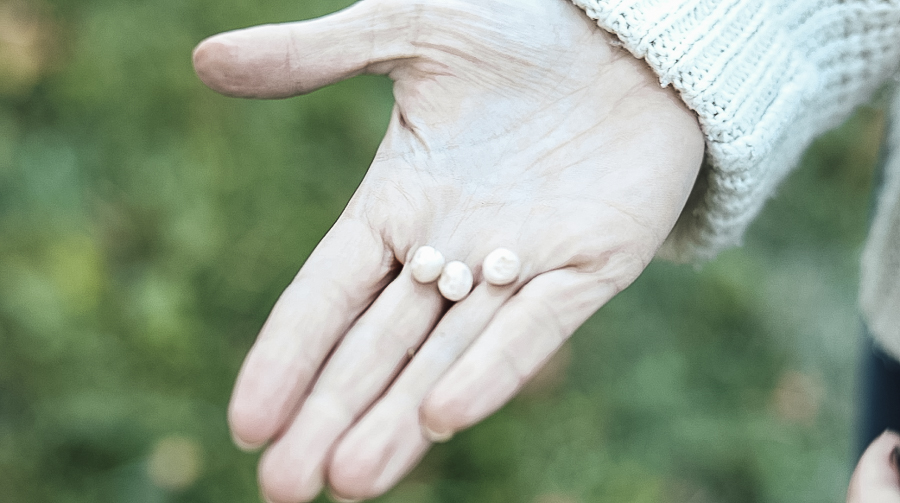
I often leave mine sitting out on a plate in a dry place for about a week to ensure they’re completely dry before I package them away.
I’ve found the best packaging is a simple labeled paper envelope! You can access my free printable seed packet by entering your email address below if you’d like to make copies for your saved seeds.
Other plants produce their seeds in slightly different ways.
Carrots, radishes, and beets bolt to produce flowers, and then the flowers contain the seeds for the next year.
Kale, Broccoli, and other “brassicas” like cauliflower produce flowers and then produce seed pods on the stalk that contain the seeds.
But the process is still pretty similar. Leave the plant alone as best as possible until it’s starting to dry up, then harvest the seeds, let them dry, then pack them away!
The Wood Lot:
The last of our big fall-on-the-farm tasks is to get the wood lot cleared up!
Through spring and summer, my husband and son cut the wood we’ll use for heating our house through late fall, winter, and early spring.
Once it’s cut we leave it in piles in the yard to dry through the summer, but come fall, those piles need to get all stacked up in our wood shed to finish drying and seasoning.
Often the rain comes earlier than we’d like, and we’ll throw tarps out over the wood in an effort to keep them dry.
But I always appreciate the day all the bright blue eye-sores get to be put away and we know our wood pile is safely tucked away inside the shed.
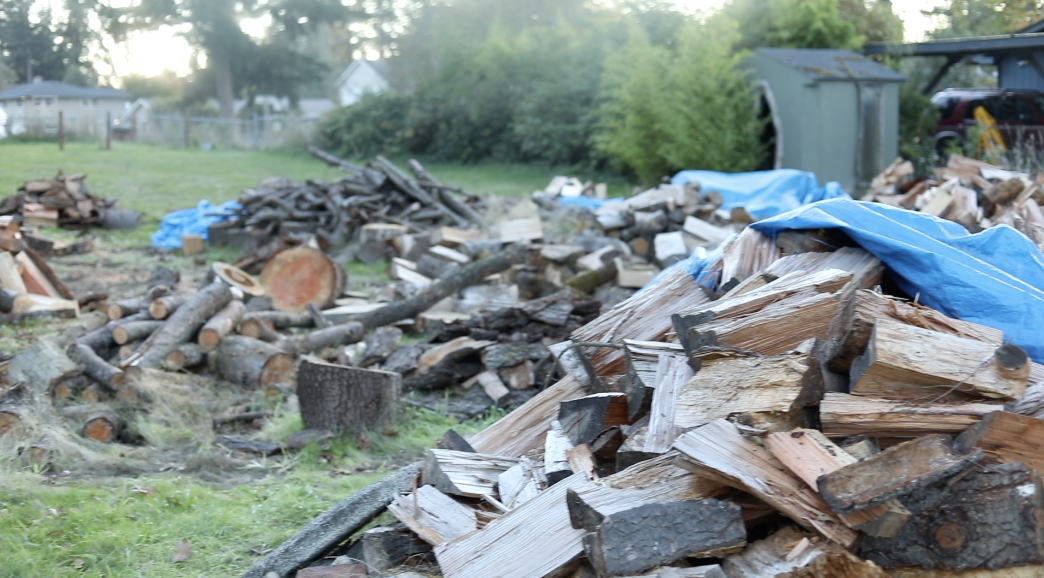
Happy Fall to you all! I’m appreciating the last of the sunny days around here, while also looking forward to the cozy fall that’s quickly approaching!

Pin this for Later | Fall on the Farm:
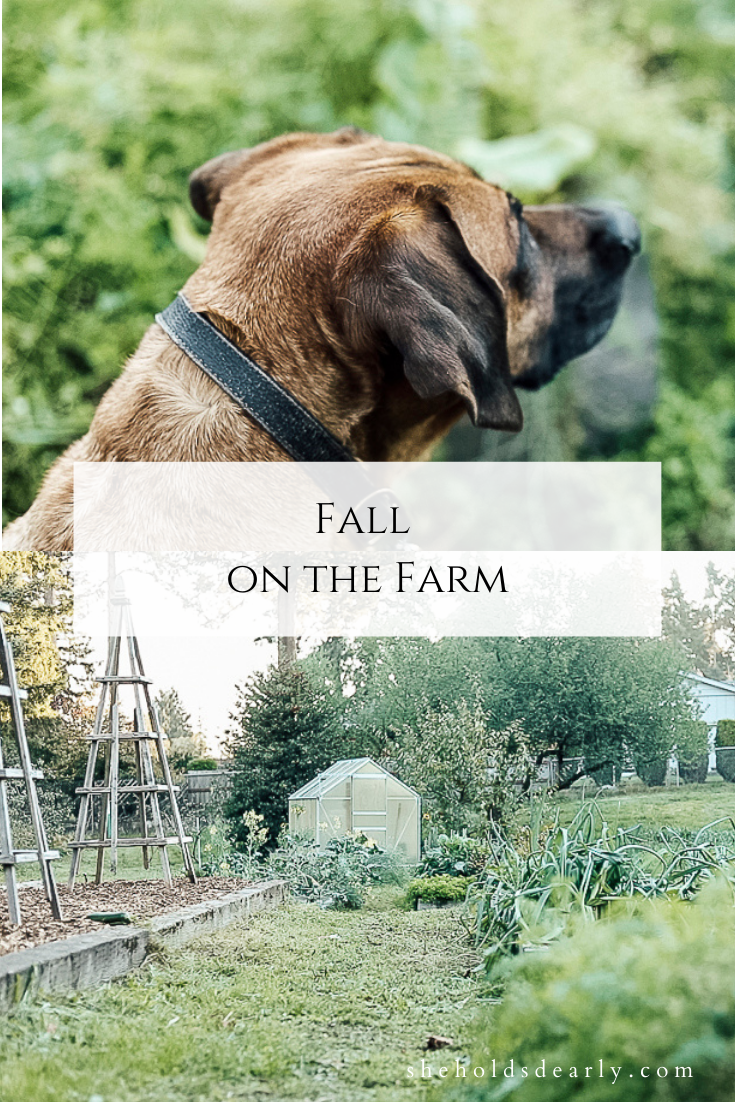
Until next time,